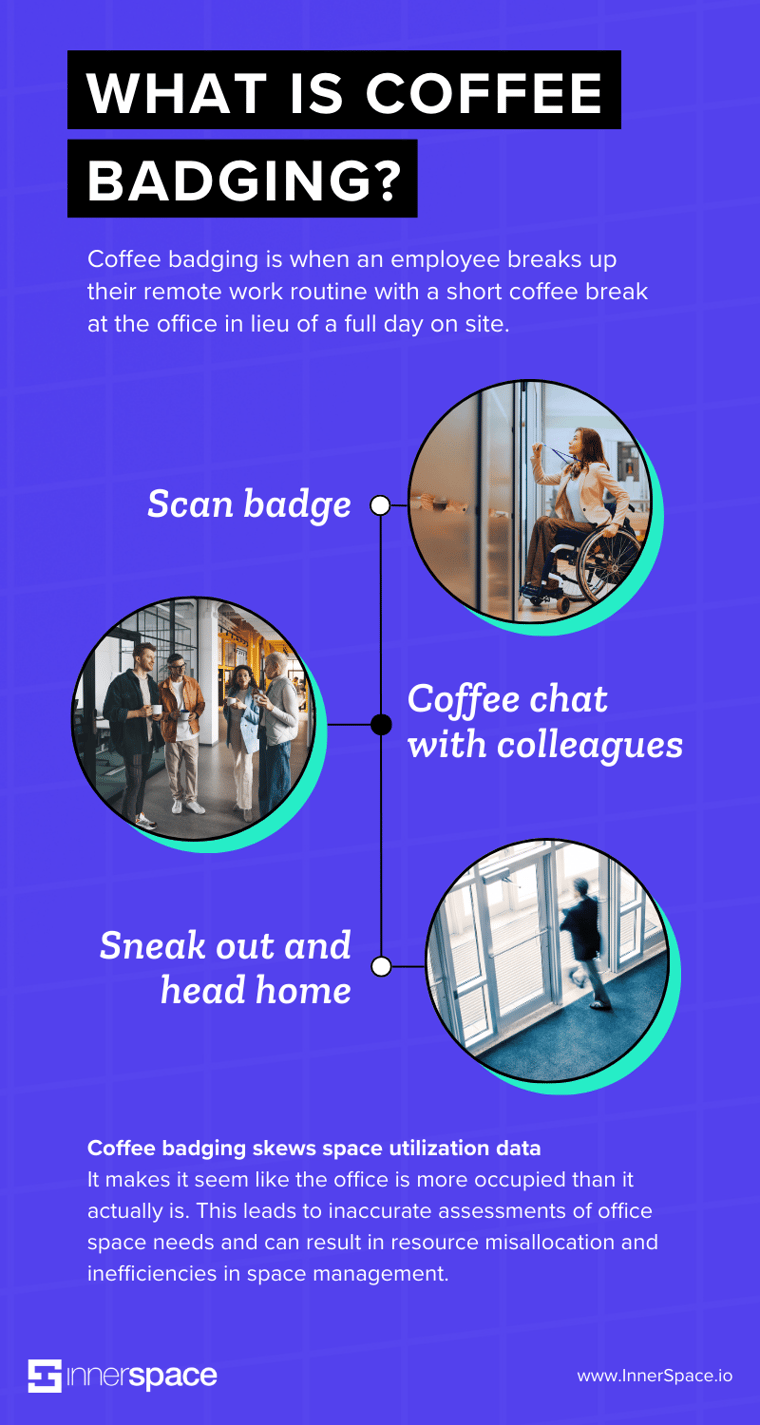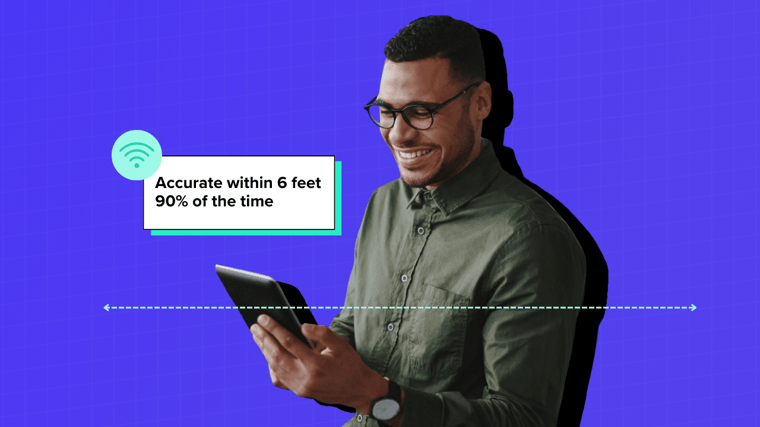What is Coffee Badging & How is it Affecting the Workplace?

How reluctance to return to the office skews spatial intelligence gathering
Practices like coffee badging have emerged as a key factor that skews spatial intelligence gathering. With many businesses embracing a mix of onsite and remote work, understanding how employees interact with the office is more critical than ever. When workers tap or swipe their key cards, that data is captured somewhere. But does this badge data truly reflect employee activity? And how does coffee badging, a practice where employees scan their badge briefly for a coffee break rather than a full day at the office, affect the overall picture?
The rise of “coffee badging” in Hybrid Workplaces
Despite many return-to-office mandates, a majority of employees still prefer remote work, leading to the phenomenon known as coffee badging. In this practice, employees scan their badges, have a quick coffee chat with colleagues, and then slip out before spending significant time at the office. This behavior means that the coffee badging data collected can be misleading or incomplete in capturing true employee presence.
Curious about what InnerSpace could do for your institution?
What Is the "Coffee Badging" Infographic?
Our "What Is Coffee Badging?" infographic visually breaks down the impact of coffee badging on spatial intelligence. It explains how brief badge scans may not represent a full day’s work, skewing the data that companies rely on to understand office occupancy and space utilization.

Where does the time (and the staff) go?
Even if badge data were entirely accurate, it only provides a partial snapshot of employee activity. While it shows when employees enter the premises, typically through the front door, it fails to track where they go after that. Are they heading to their workstation, a meeting room, or the kitchen? Without this crucial information, understanding the full impact of coffee badging on space utilization remains a challenge—like having a GPS that only shows your starting point without mapping your entire journey.
Ask better questions, get better answers
To overcome the challenges posed by incomplete badge data and the distortions introduced by coffee badging, a more integrated approach is necessary. By combining badge data with additional sources—such as Wi-Fi analytics and room booking systems—organizations can gain a comprehensive view of employee behavior and space utilization. Key questions that need answering include:
- Pathways: What is the flow of traffic over time?
- Frequency: How often does a space get occupied?
- Dwell Time: How long do people stay in a space?
- New vs. Returning Visits: How many visits are new?
- Team Behavior: Which spaces do teams frequently use?
Answering these questions with a broader data set leads to smarter decisions about maximizing office real estate, whether that means creating more meeting rooms, adjusting booking times, or relocating teams closer to essential resources.
InnerSpace Wi-Fi based technology offers industry-leading accuracy

Design for satisfaction and success
At the end of the day, our goal is to design workspaces that are both functional and inviting. By delving into the nuances of how teams use their office environments—including the effects of coffee badging—we can create spaces that foster collaboration, productivity, and overall satisfaction. Recognizing that badge data alone—especially when influenced by coffee badging—is just one piece of the puzzle, we must adopt a holistic approach to data collection.
InnerSpace’s Sensor-Free Alternative
Traditional workplace occupancy systems, which often rely on physical sensors, may miss the complete picture due to issues like coffee badging. InnerSpace offers a sensor-free solution that leverages your existing Wi-Fi network to deliver the same critical occupancy data—without the pitfalls of incomplete badge scans. This innovative approach provides:
- Accurate, Real-Time Insights: Capture comprehensive occupancy data that isn’t skewed by short-term coffee badging.
- Cost Efficiency: Eliminate the need for expensive physical sensors.
- Easy Deployment: Integrate seamlessly with your existing Wi-Fi infrastructure.
- Enhanced Privacy: Use anonymized data to protect employee privacy.
- Scalability: Adapt effortlessly to changes in office layout or team size.
Curious about what InnerSpace could do for your institution?
By addressing the shortcomings of traditional badge data—and the distortions introduced by coffee badging—InnerSpace empowers you with accurate, actionable insights to optimize your office space and drive better business decisions.
Accurate space utilization data through Wi-Fi?
We'll prove it to you.
See why industry leaders leverage InnerSpace to generate valuable insights that go beyond occupancy.


